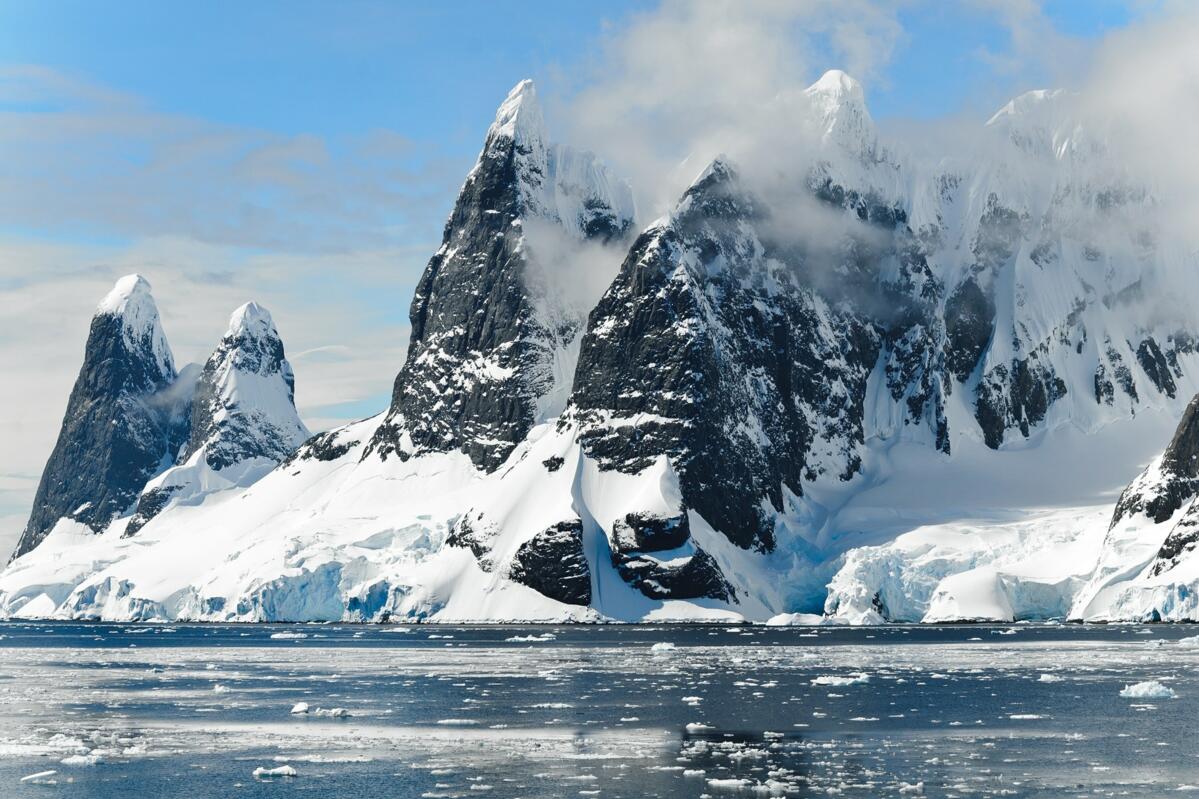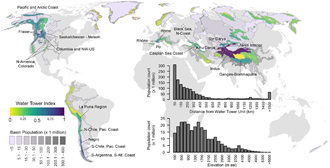Global warming has already had a major impact on the occurrence of snow. Snow and glacier melt is largely responsible for filling the world's natural water towers. The system is subject to diverse and intensive use. But will it stay that way?

Snow has prodigious powers. As children, we discovered that snow could close schools, and, as adults, we are wizardly turned into well-dressed kids enjoying winter sports in the mountains. In spring and summer, mountain snowpack melts and slowly releases water into streams, rivers and lakes, constituting a vital water resource for the regions below and near the mountains.
For those who had the fortune to take a closer look at snowflakes - it is estimated that half of the world population has never experienced snow - the hexagonal shape of each snowflake evokes the subtle mysteries of nature. Renewed scientists devoted their careers to the study of snowflakes or snow crystals, so that snowflakes of any shape or size can nowadays be created in a lab.
In the 1930s, Japanese nuclear physicist Koichiro Nakaya grew snow crystals in his cold lab at different temperatures and humidity levels and observed the different forms, shown in the snow crystal morphology diagram, also known as Nakaya Diagram (Chart 1). The diagram shows that large thin plates, slender needles and beautiful stellar dendrites grow at different temperatures, and from simpler to more complex forms as humidity rises.
Ken Libbrecht, an astrophysicist at Caltech, even pursued a grand unified theory of how snowflakes form and started baking snowflakes in sort of cold ovens of his invention, controlling their shapes by changing temperature and humidity as they form. One of Prof. Libbrecht's accomplishments has been to create identical-twins snowflakes, busting the old adage that "no two snowflakes are alike". Beyond the realm of theoretical physics, the practical implication of knowing the structure of snowflakes is to improve the accuracy of snowfall measurement and winter weather forecasts. Ultimately, science is interested in measuring how the amount, timing and duration of snow cover affects water availability for populations living in the mountains or directly downstream.
Whiskey is for drinking. Water is for fighting (M. Twain)
The white snow caps of the mountains are like a giant reservoir in the mountains. Scientists often refer to mountains and highlands as natural “water towers” because they provide lowlands with essential freshwater for irrigation and food production, industrial use, and the domestic needs of urban populations. (Incidentally, we know how much freshwater is produced out of the liquefaction of the snowpack thanks to the tools invented in the early 1900s by James Church, a professor of Latin and Greek, whose discovery helped end the Lake Tahoe Water Wars.)
In a recent study published in the journal Nature, a team of scientists assessed and ranked the importance of the 78 most important water towers based on ingenious measures of water supply and demand. According to the study, nearly 1.9 billion people, about one-quarter of the world population, live in or directly downstream of these critical mountains. The authors find that Asia's Indus basin - fed by the Himalayan, Karakoram, Hindu-Kush, and Ladakh ranges - is the most important storage unit on the planet, as it supports more than 200 million people settled across parts of Afghanistan, China, India and Pakistan (Chart 2). The other water tower systems are the southern Andes in South America, the Rocky Mountains in the US, and the European Alps.
Crucially, the researchers observe that, among the 78 global water towers, the Indus basin is also the region most vulnerable to political tensions and future socio-economic and climatic changes. This is explained by the projected increasing demand for freshwater and water supply issues, as climate change is negatively affecting the currently balanced mix of precipitation, glaciers, snow and surface waters in the region. The study concludes that (hydro-)political tensions between Pakistan, India, China and Afghanistan are likely to increase in the future, potentially leading to the destabilization of the entire Indus region.
Climatologists and meteorologists have warned that worldwide warming is the main driver of the vanishing white snow caps. As snow is water in a concealed shape, it is mainly useful when it melts and replenishes lakes and streams. Beautiful as they might be a few lab-created snowflakes will not be enough to preserve political and social stability for the regions closer to the world’s natural water towers as snow vanishes from the mountains.



